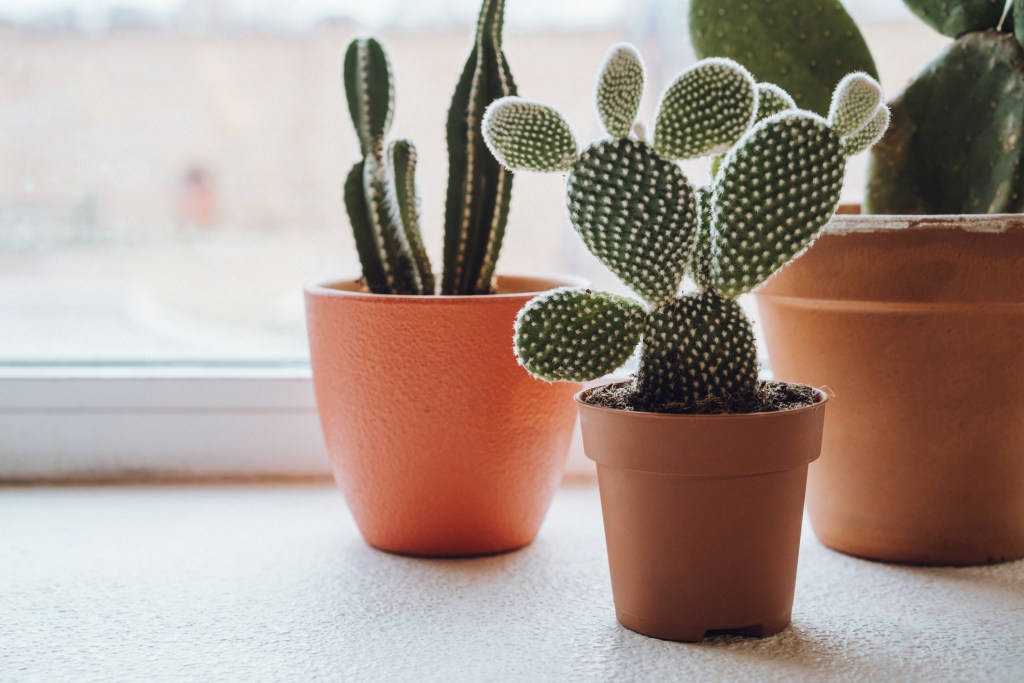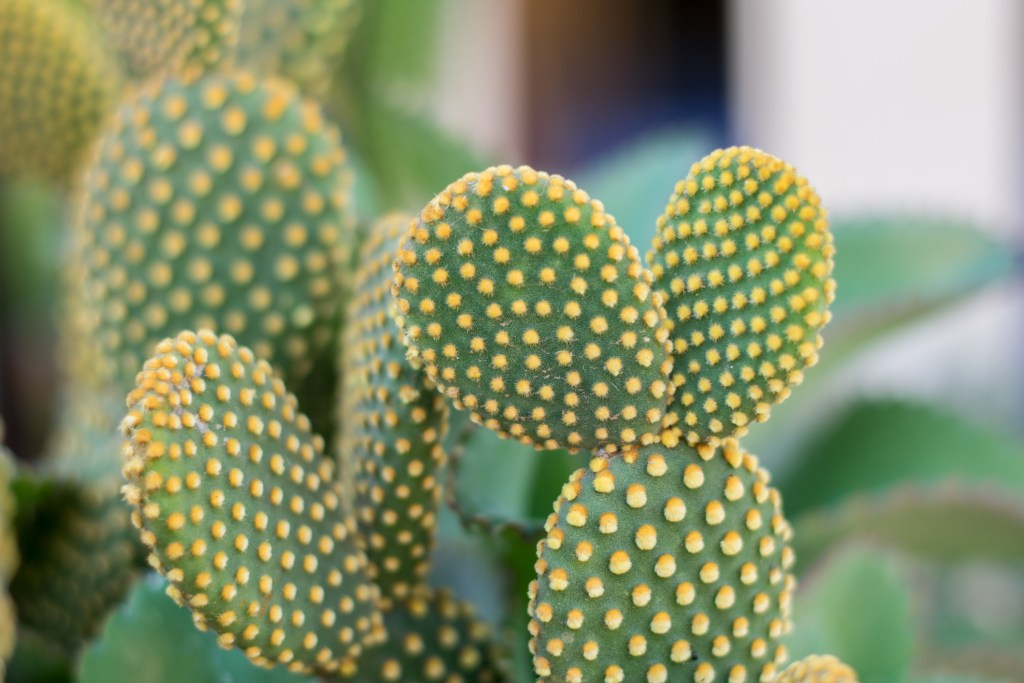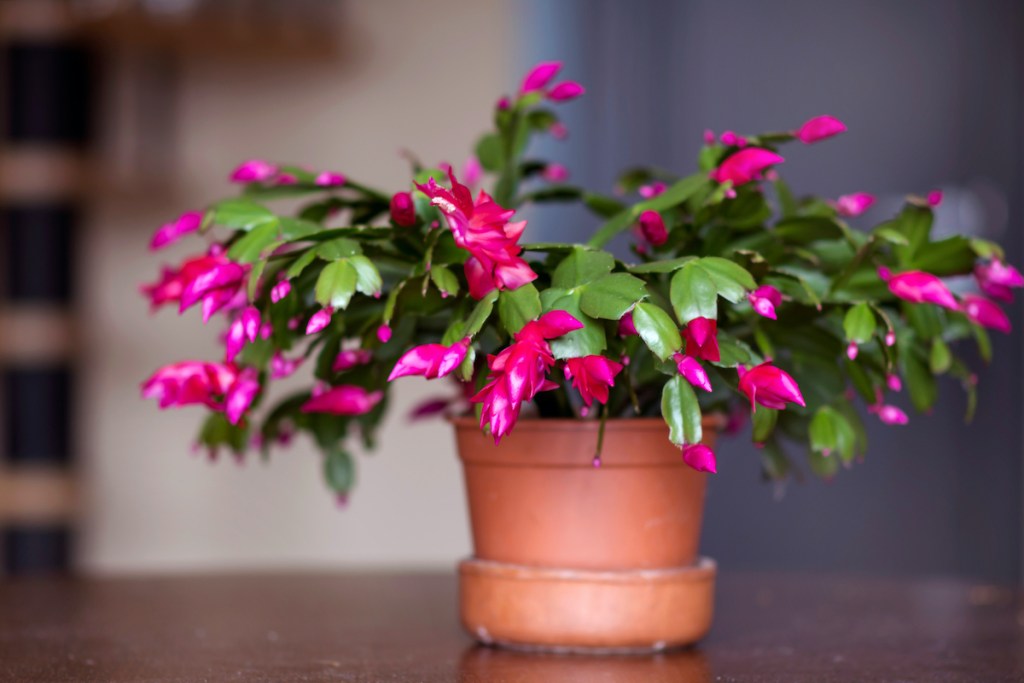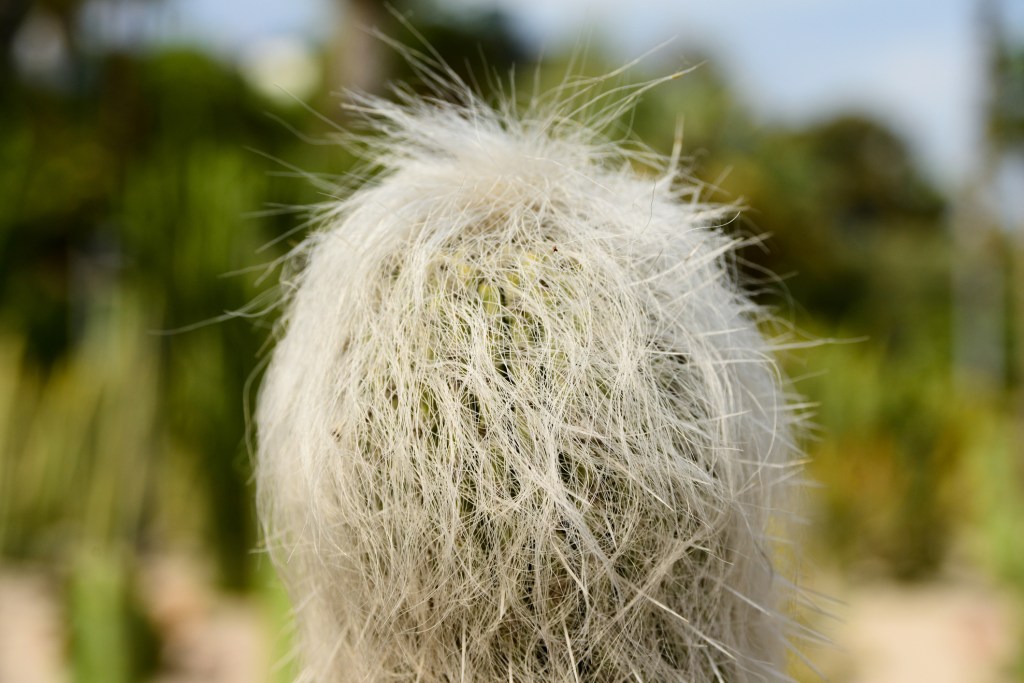Cacti are considered low maintenance all across the board, but things can get tricky when you keep these spiky plants indoors. Most cacti notoriously require bright direct light to thrive, and that’s not always something a home can provide. However, there are many cacti species that only need minimal care—that is, less light, water, and fertilizer. In fact, cacti aren’t commonly frost hardy, so they actually prefer being indoors during cold winters. Ahead, we’ve rounded up the best low-maintenance cacti that you can keep as houseplants to bring the desert indoors!

General indoor cactus care
Before we dive into the perfect cacti for your home, let’s go over general indoor cactus care. Cacti usually feature a rounded shape, as they store water inside of their succulent stems. They prefer bright direct sunlight and warm temperatures to grow. Indoors, you’ll typically get the best lighting from a south- or west-facing window. To make sure that your plant grows evenly instead of leggy from reaching for light, rotate it periodically. Should you not receive enough light, you can always supplement your plant with a grow light.
With cacti, a well-draining cactus mix is a safe bet for soil, as indoor potting mix doesn’t drain fast enough and may give your plant root rot if you overwater. A water-wicking terracotta planter is also the most forgiving home for your plant, should you have too liberal a hand with watering. The golden rule with cacti is to underwater—only give your plant a drink when its soil dries out. Cacti will also dislike extra humidity in the air, so there’s no need to mist your plant or set it next to a humidifier.
Best indoor cacti for your home
Fairy castle cactus (Acanthocereus tetragonus)
The fairy castle cactus features columns with rough, bumpy spines along the stem edges. This plant is happiest in a compact terracotta pot and appreciates plenty of bright direct light.
Its columns may grow thin and leggy without sufficient light, but they’ll still stay alive as long as you don’t overwater. This cactus seldom blooms, but you may get large yellow or white flowers with a mature plant. The fairy castle cactus isn’t particularly frost hardy, so you should keep it in temperatures above 30°F—if it’s comfortable for you, it should be comfortable for your plant!

Bunny ear cactus (Opuntia albispina)
Instead of spines, the bunny ear cactus consists of bright green fleshy pads covered in glochids, or short yellow bristle clusters. Although the glochids aren’t technically spines, they can still get lodged into your fingers, so you should be prudent when picking up your plant—consider using a rolled-up newspaper. As this plant doesn’t tolerate frost, keep it in temperatures above 50 degrees Fahrenheit. Also keep it in a well-draining, sandy potting mix, or simply house it in cactus soil, which you can fertilize with a diluted cactus fertilizer every two weeks during the growing season. With the bunny ear cactus, you may get mealybugs or scale, which you should clean with rubbing alcohol.
Rat tail cactus (Aporocactus flagelliformis)
If you’re partial to a trailing look, the rat tail cactus may be the plant for you. It features thick, trailing stems covered in tiny yellow spines—approach these with caution when handling your plant! During the spring, you may notice red or purple flowers, although these won’t last for more than a week. The rat tail cactus prefers slightly moist soil and can be kept in a well-draining potting mix as long as you don’t overwater it. It can handle temperatures as low as 40°F, but it really does best in conditions above 50°F. If you provide your plant with these conditions, you may be rewarded with up to one foot of growth a year.

Christmas cactus (Schlumbergera)
Come winter, you’ll notice your local gardens decked out with not only poinsettias but also Christmas cacti. Coming with flat and smooth green leaves, this cacti variety puts out bright pink, purple, and red blooms around the holidays. Although it’s technically a cactus, it appreciates some humidity as well as some darkness to yield its beautiful flowers, so you won’t have to worry too much about it not receiving enough light.
Scarlet ball cactus (Brasilicactus Haselbergii)
The scarlet ball cactus is an easygoing plant with, as the name suggests, a ball form covered in silvery spines. It shoots out bright red blooms during the growing season, given that it gets enough light and is old enough. During the spring and summer, give your plant a low nitrogen fertilizer every month. You’ll also want to provide it with partial shade during those peak hot hours in the summer.

Old man cactus (Cephalocereus senilis)
As its name promises, the old man cactus is a spined cactus covered in whitish hairs. In the desert, the hairs keep this plant warm during cold seasons. With regards to temperature, this plant does best above 65°F. If you keep it as a houseplant, give the old man cactus as much light as possible. If you’re looking for a cactus that won’t grow too big, the old man cactus stays relatively compact, as it’s a slow grower.
Desert landscapes may be what you think of when you think of cacti, but that doesn’t mean you can’t give a cactus appropriate care inside of your home. Indeed, there are definitely cacti that can live happily as houseplants. From the fairy castle cactus to the old man cactus, you can grow a healthy, home-dwelling cactus if you can provide it with light, avoid overwatering, and have a well-draining cactus mix at the ready.



